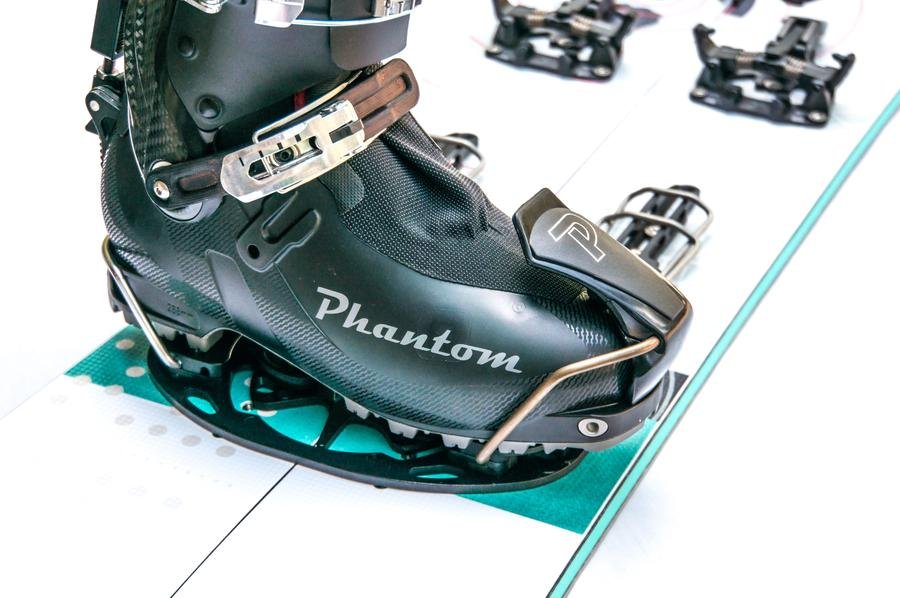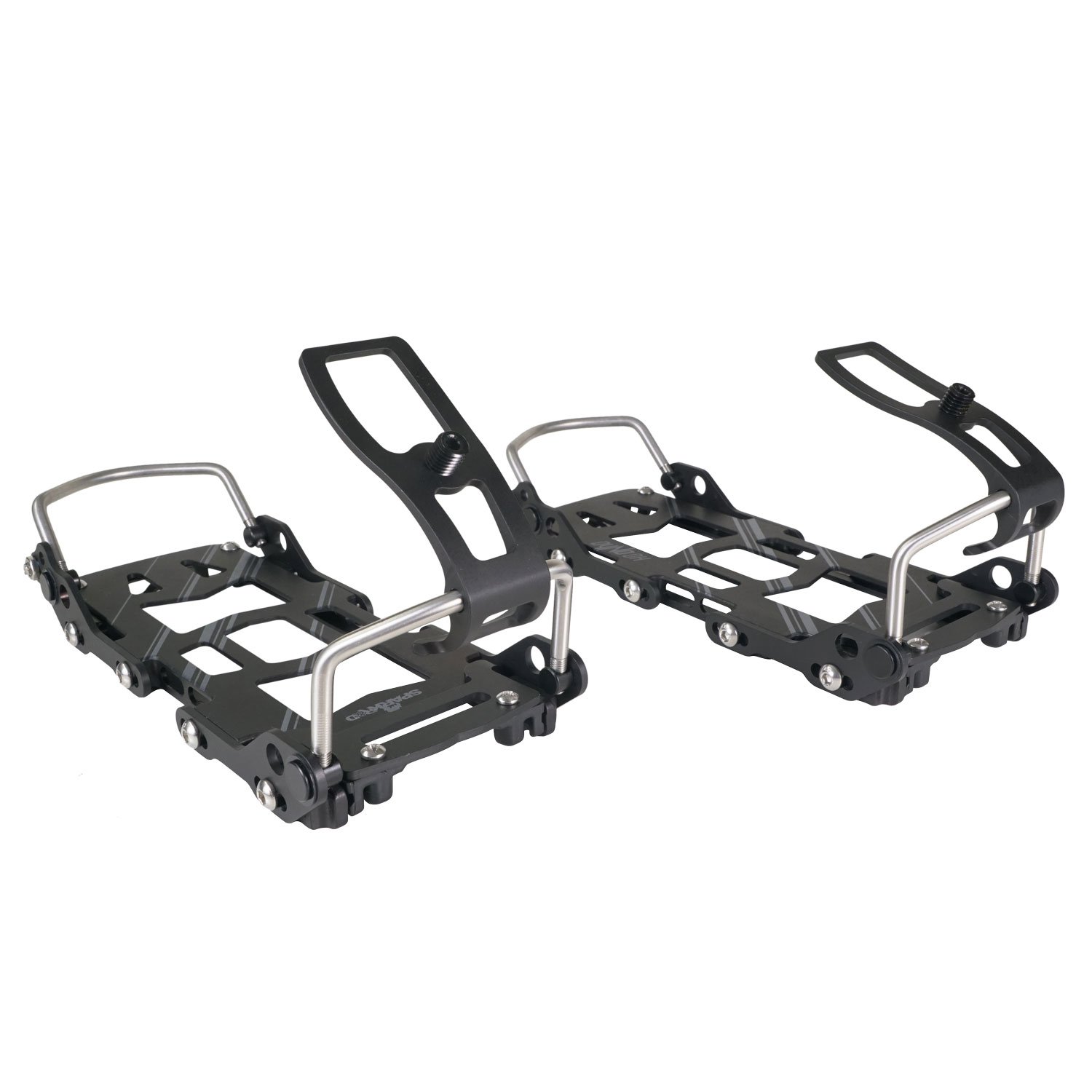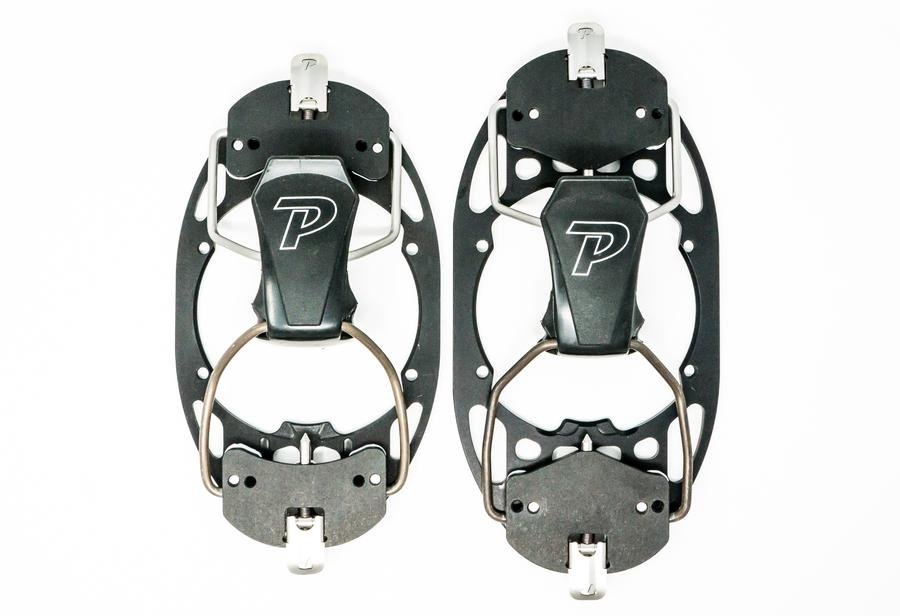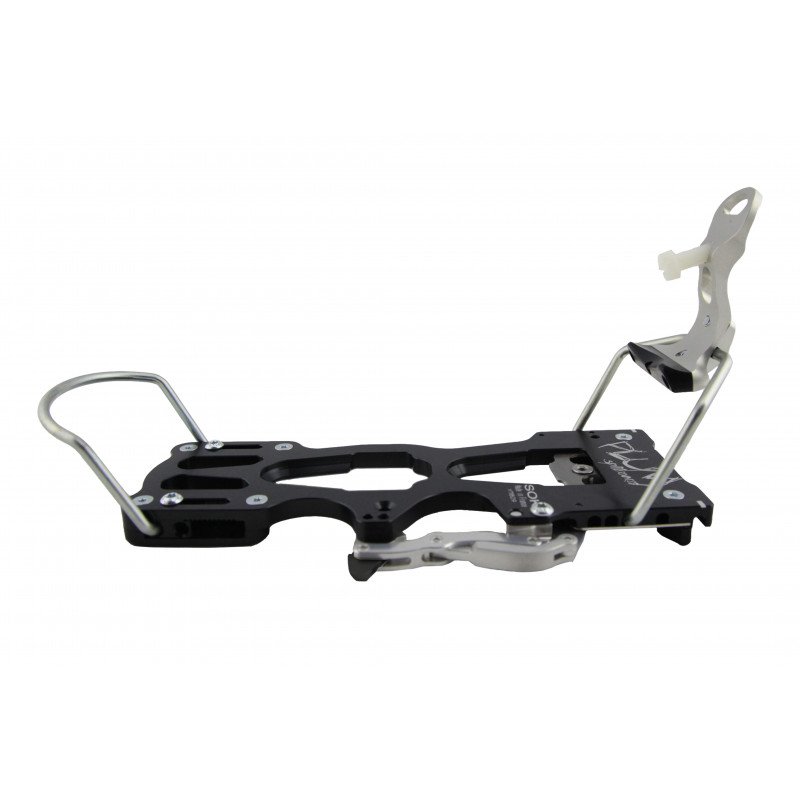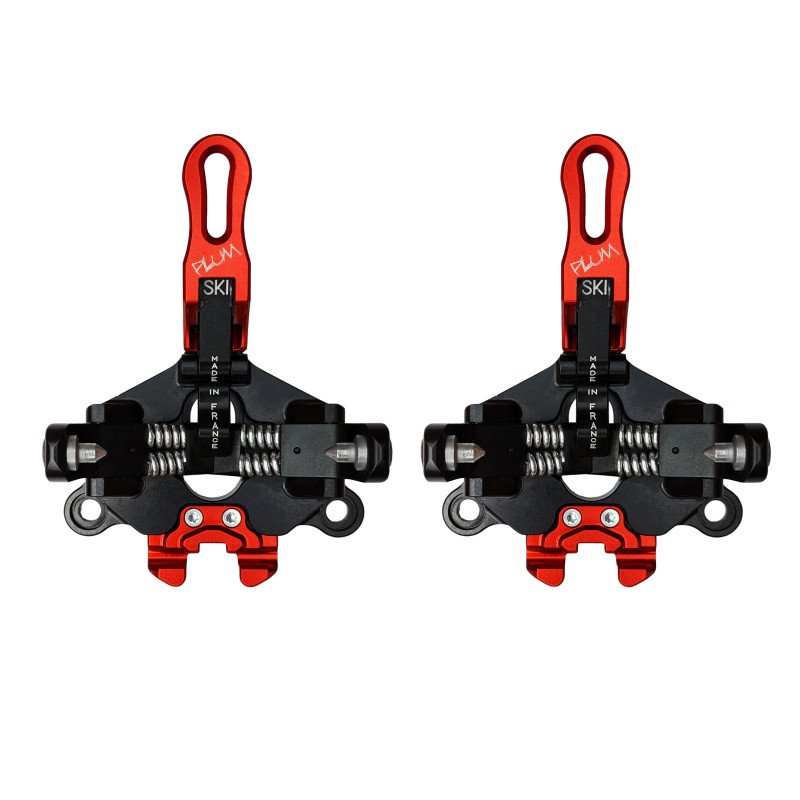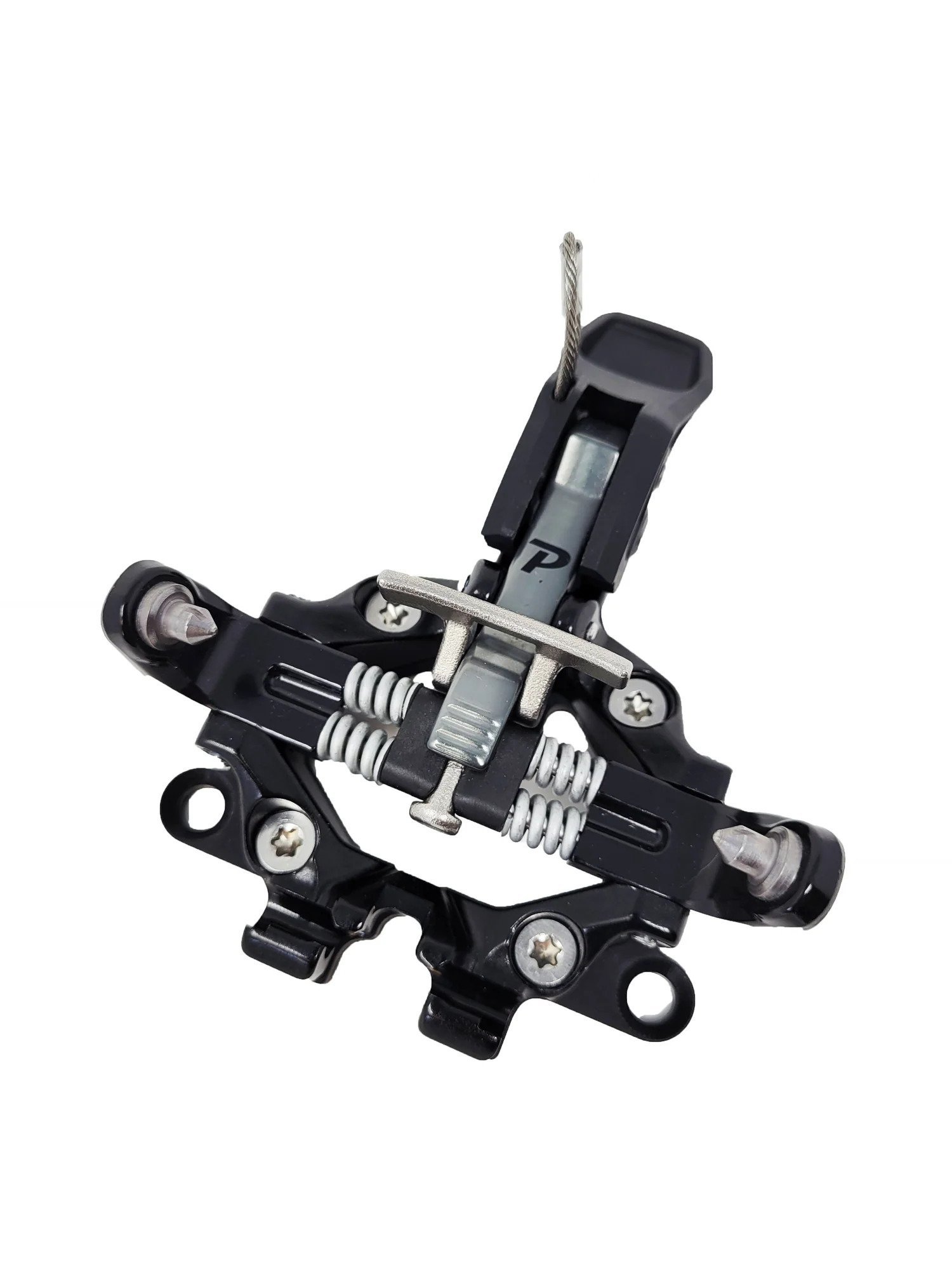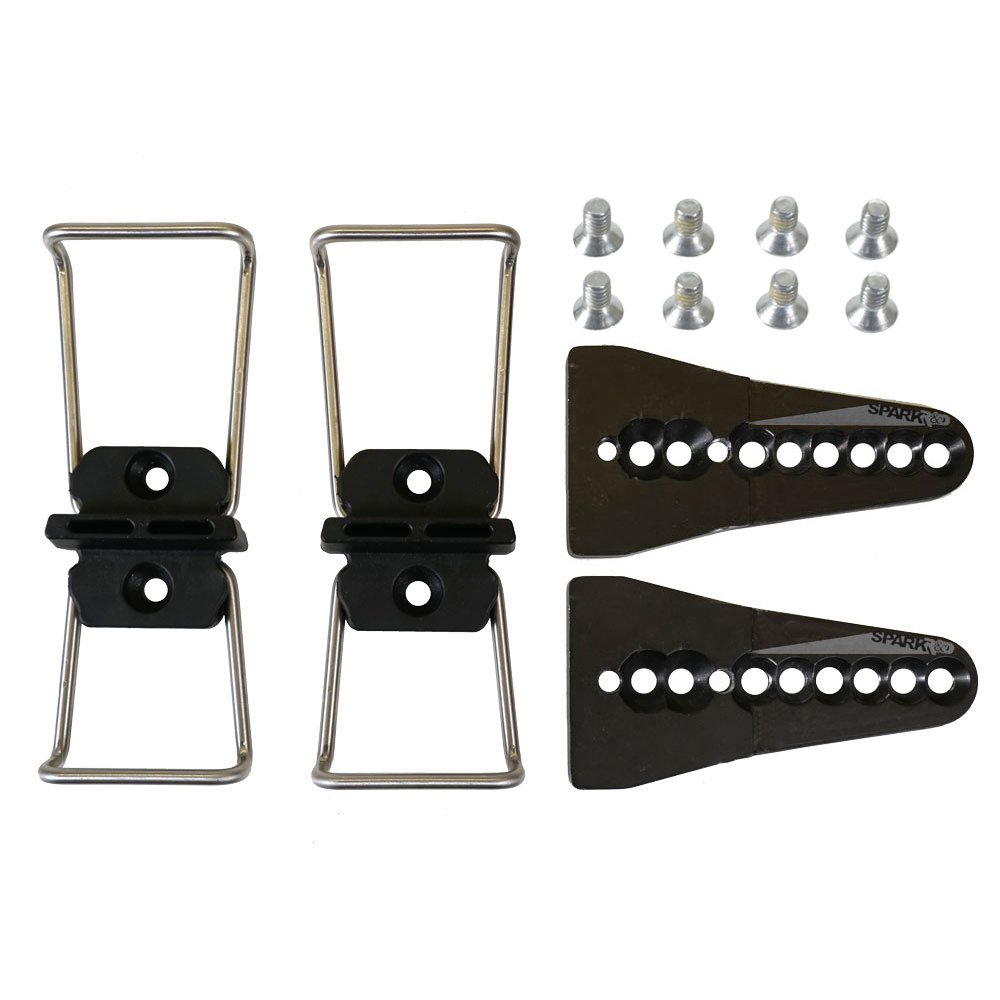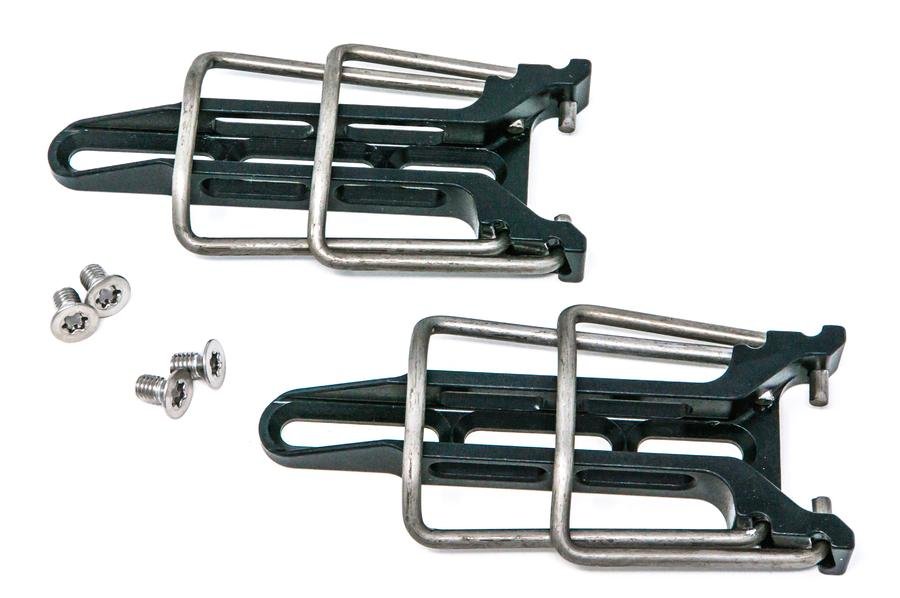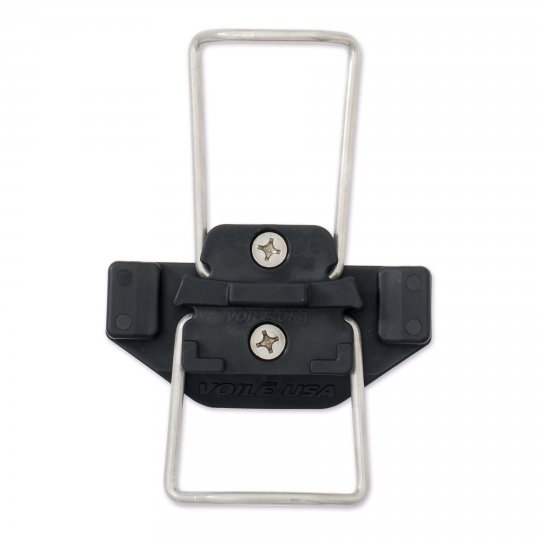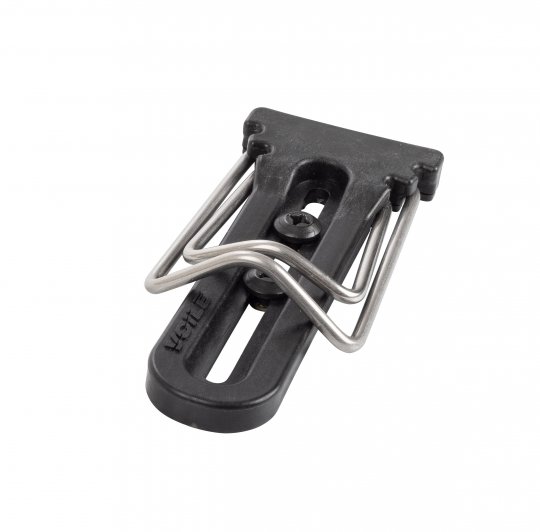Going Hard - Options for a Hard-boot Splitboard Set-up
The more I splitboard, the more I realise that soft splitboard equipment is holding me back.
It’s not that I don’t like soft-boots and bindings, in fact I love them. The surfy feel, the comfortable boots, the cranking up of ratchets when on the steep, and the ease of walking to the bar to get another beer, are all things I might miss. But the time has come to slip my ever-so-soft feet into a pair of hard-boots and bindings to give me more confidence holding an edge in no-fall zones in walk mode.
But where to start?
Fortunately, there are more and more options these days in both boots and bindings, so we thought it’d be useful to compile most of your options in one place. This isn’t an authoritative review of hard-boot kit but more of a where-to-start and what’s-on-the-market, given that we’ve just researched it for our own purposes anyway!
So, if you, like me, are sick of losing a downhill ski while side-hilling on a crust, or worse being left behind by your ski-touring buddies who don’t seem to notice that the skin-trail snow’s gone to shit, read on. And if the thought of hard-boots turns your granny over in her grave then keep it soft, and we’ll see ya at the col, its just we may well now be waiting for you at the top with our brothers on two planks.
Boots
At least with boots it used to be relatively simple, well that’s if you don’t want to do any modifications yourself, as there are currently only three splitboard-specific hard-boots: Phantom’s Slipper/Slipper HD - but as of Oct 2024 Phantom no longer make the Slipper, they do have some stock left and will continue to sell spare parts - the Key Equipment’s Disruptive and the Splitpin. There is actually one more but it’s super expensive, more on that below.
But hang on, you say, surely soft boots are way more comfortable or everyone would be wearing hard-boots! But these days, that’s not necessarily true. Phantom have made some significant functional tweaks to the Backlands boot but it’s still, fundamentally a Backlands boot – and having tried one on in a shop recently I was wowed at the comfort level – as good, if not better than my current soft boots (standing in the shop, anyway!). And when in walk mode there is so much less resistance to movement, it’s incredible. And the liners are great too. As one of our mates says, “These are race touring boots - they are even built to run in!”. Indeed, John from Phantom wears his Slippers all day, skiing or not.
If you live in the US you’ll probably go for the Slipper and if you live in Europe the Disruptive is possibly the way to go, because of import taxes. If you live in the UK you’re stuffed either way thanks to BREXIT and may have to pony up a whopping 22.5% VAT and customs fees on top of the asking price, so take your pick - reasonably established (but now discontinued), or the new-ish boy.
In dedicated split-boarding boots, you have:
The Phantom Slipper has been around a couple of years, and has had great reviews, you can find out more about its development in our podcast with John Keffler here. New in the 21/22 season and reviewed by is is the Phantom Slipper HD (Heavy Duty) with an additional plastic tongue to protect the soft gaitor material, a lot more stiffness, and a higher internal gaiter for more protection from the elements. Phantom assure us that the original Slipper is still a stonkingly-good boot, and has a tiny weight advantage. All Slippers are based around the Atomic Backlands ski touring boot, modified to give a soft boot feel, with the lower buckle moved to the ankle pivots to alleviate heel lift and the addition of Phantoms Link Lever, a sprung version of the Atomic lever, which flips up in tour/walk mode and clicks back into place for riding. The link Lever is available in various strengths of spring, enabling a tailored ride depending on your weight.
See our review here - for narrow feet up to 295mm, this is a hugely comfortable boot, giving excellent surfy feel and precise adjustments, though is expensive and showed some interesting wear and tear quite quickly (all fixable).
The Disruptive was new in 21/22, is now in its 4th season and has had a few tweeks on the original design. It’s based around an Italian made ski touring boot, we weren’t told exactly which one, with all parts made within a 800 km radius to their headquarters in the Haute-Savoie region of France. They’ve moved from a soft tongue to a firmer plastic one, which still allows a good flex while riding, and have a new lighter plastic bottom half in a limited edition run of 80 pairs for the 24/25 season (these are being worn by Krister Kopala who is riding some very big lines). The new 100g/foot lighter boots will also have a Vibram sole and is available from Oct 2024, in 27, 28 and 29 cm only, with hopefully more sizes and availability in Oct 2025.
Check out our pod with Key Equipment co-founder, Hampus Cederholm.
See our review here - Catering for wider feet but not running to quite as large sizes , it is also highly comfortable and surfy, and keeps the cost down by using less lower-tech adjustments and buckles than the Slipper - but still works well.
And if you can afford it… the uber-light Pierre Gignoux Black Snowboard, a carbon hard boot that’s comes in at a whopping €1700-odd, and seems derived from a more cross-country skiing direction, somehow... If anyone out there has tried it, let us know!
And lastly The Splitpin, above, not tried by us yet, is a new to market boot, fabricated in Chur Switzerland. It’s a modified Dalbello Quantum ski touring boot with a changed up spring loaded heel lock and a dynamic shaft manipulation cord. The Splitpin comes with a Thermoflex heat moulded inner, and it’s actually possible to test the boot, if you visit them in Chur. They also offer a fitting service, which is unique, but for this you again must visit them in Chur, but it does cut out all the problems of not being sure what size boot to buy.
Ski-touring boots
The Atomic Backlands range is also an option here - the Phantom Slippers are based on one of these models after all. And for these, you could consider buying Phantom’s “Link Lever”, made specifically for Atomic Backlands, to replace their default rigid ski/walk mode lever arm and give you a more surfy feel – just unscrew the old one, screw in the Link Lever, and bob’s your uncle.
We’ve noted that with some of the Atomic Backlands, some youtubers and internetters have reported cracks appearing in the fronts of the shells - mainly, it appears, those models where there is a 90-degree corner on the top/front of the shell where the very front of the softer upper tongue starts from - probably due to unusual torsions that the designers didn’t take into account that come from splitboarding! But having said that, the base model Phantom Slipper (not the HD, shares that feature and we’ve not heard about that issue in them. The Slipper HD anyway has more re-incforcement around that area, and after several seasons on them we’ve seen no cracking of their shell.
Many riders use Dynafit Speedfits or TLTs, some straight out of the box, or modded, and you could consider their Speed Boot also.
Dedicated ski-touring boots like the Scarpa Alien or Dalbello Quantum can work pretty-much straight out of the box. You’ll benefit from the full walk-mode flex range, which gets restricted on the Disruptive and the Slipper by the placement of the ankle strap. On the flip-side, you’ll need to check if you can get sufficient heel hold from ski-touring boots, and of course, the flex and stiffness you need.
Other options
The Phantom Link Lever - The Link Lever is a clever piece of kit that allows you to customise ski touring boots into the perfect flex for downhill snowboarding. They come in four different spring options, with varying resistance, depending on your weight or riding style. £225 a set, replacement springs cost only £7, so you can change them up or down depending on conditions.
The Damage
Slipper - Limites sizing left at bargain price of $480 unofficial weight 1100g
Slipper HD - $829.95 (comes with an additional plastic tongue over the top of your foot, to protect the soft gaiter material there (recommended) and stiffen up the ride.
Disruptive - €649 weight 1180g
Splitpin - CHF 898 (around £800) not sure of weight but around 1180g
Other boots - check around - all sorts of prices and weights!
Bindings
With bindings it becomes a little more complicated, with at least four main options.
One big difference between them – three of them go into your backpack when touring, thus saving you “swing weight” on your feet, while the Plum SOK can be used to tour in as well (possible advantage here in transition speed?). All are also much lighter than soft bindings (although this is somewhat offset by the “Toe Tech” you’ll need - more on that later) and also with a much lower profile. Also, they either include canting or are compatible with canted pucks – since hard-boots are, well harder, and this reduces angle through your knees, and thus the pressure of the top of the hard boot on the side of your leg.
Spark R&D Dyno DH seem like a ringside seat to the next heavyweight bout - bloody hard to come by. High demand might be because, if like me, you use the Spark soft-boot system then you’ll already have pucks on your existing board that these bad boys will slide straight onto. Spark do advise though using canted pucks to make it easy on your knees, but you could keep using the regular ones.
Phantom M6 Bindings are things of beauty. A super low profile, very few moving parts, and strong as nails. The actual metal of the binding flexes when ridden, making it a comfortable ride, while still dialling in a secure hold on your boot and sitting flat on the board to give a more solid-board feel. The M6 comes with 3 different types of puck - each set costs an additional $199: A super light and simplistic fixed angle set; an adjustable-angle set; and a “3-in-1” set which are adjustable and will also fit onto a solid board so you can ride your hard-boots on that too. Read our review of the M6 system here.
Plum SOK uses the same side-lever system to lock onto the Plum-designed interface as their soft bindings. If you don’t already have those it’ll add another €229 to the price but includes the simple touring bar bracket too. Plum, unlike the others here, also sell ski bindings as well as skis and snowboards. Read our review of the SOK system here.
Karakorum Guide HB are simple, solid and cantered. There’s no weight info on their site but they can’t weigh much as there’s not a lot to them - they claim they’re the lightest hard-boot binding on the market. They work with the Karakorum Prime System interface, which is sold separately. The sides of these bad boys are different colours, so you won’t get them round the wrong way when in the middle of a dicey transition. Review coming soon!
Voile also make a couple of hard-boot bindings, the Mtn Plate ADS (ascent/descent) $265, and the Voile Mtn Plate DS (descent only) $200. They’re new this season and they look no-fuss and adjustable, though perhaps have a higher stack-height than some of the above.
Phenix Known for 4 part custom made splits and swallow tails solids, Phenix have some hybrid soft boot style straps mounted on a flat hardboot plate, but these are just prototypes that we’ve seen on Instagram and not for sale right now.
The Damage
Spark R&D Dyno DH $349 - weight 818g/set
Phantom M6 Bindings $420 - 860 g (S/M)/set & 960g (L/XL)
Plum SOK €749 - 980g/set including mounting plates
Karakorum Guide HB - $520 - unofficial weight 780g/set
Toe Tech
The one really big reason for switching to a hard-boot system is to improve the uphill experience - lets face it, you’re probably not swapping primarily for the down, so the way you connect your foot to the board in touring-mode is possibly the most important aspect. You can keep the Plum SOK on the board for walking (using their simple ‘Uphill bracket’ in place of a tech toe) but the best edge-hold while touring would be to run with the more direct two-pin “toe tech”: its what skiers use after all.
In fact, you might be able to just use ski kit here – that is, a Dynafit TLT Speed toe, but with an adapter plate from Spark R&D - though it’s not clear if Spark still offer this.
For split-specific options, Plum sell the rather suave looking PEKYE; Spark have their Toe Tech; Phantom have their GT Tech Toes. Karakorum though, don’t seem to offer their own.
For something different, Voile offer the STS Tour Binding, which is a simpler affair and for use with their DS Binding plate. But knowing Voile it’ll work - and if the reviews on their website are anything to go by there’s some happy customers. Think the Plum or Spark Toe Tech minus the springs, so it’s lighter but is manually closed. If you are counting grams, this could be the one you need, though you’ll need Voile’s own ski crampons to go with it.
The Damage
Spark R&D - $210 - 296g pair
Plum PEKYE Tech Toes - €288 - 234g
Voile STS Tour Binding - $160 - 250g ($195 with heel-risers)
Phantom GT Tech Toes - £235 - 324g
Heel Risers
Risers for hard boots need to be a little higher than with soft bindings, as they go directly onto the sole of the boot and not the bottom of the binding plate.
Spark R&D Hard-boot Dual Height Wires are set at 55mm (12°) and 75mm (18°) and the plastic screw bracket is fully adjustable so as to hit the sweet spot of whichever boots you choose.
Phantom Rocket Risers, dual height as well, stand out as being fully metal and have additional slots in the body of it to allow you to thread a ski-strap though and buckle over your boot, to lock your heel down when down-skiing.
Voile’s Splitboard Dual Height Climbing Heels are not specific for hard-boots but will work, with the back climbing wire height at 55mm and the front wire is 75mm. The down side is their position is fixed on the board. Voile’s STS Tour Binding - Heels are their splitboard-specific risers, super cheap and a similar design to the Phantoms but made with a plastic base (and no slots for ski strap heel-lockdown).
Plum - Cale Hardboot Splitboard Risers, are new to the market, and should be available from December 2024, they' only have one height option but that aside work really well and are super easy to flip up and down:
Plum Cale riser
The Damage
Spark R&D Hard-boot Dual Height Wires - $65 - 196g/pair
Phantom Rocket Risers - $120 - 157g/pair
Voile Splitboard Dual Height Climbing Heels - $40 - weight unknown
Voile STS Tour Binding - Heels - $40 - weight unknown
Plum Cale Hardboot Risers - €109

